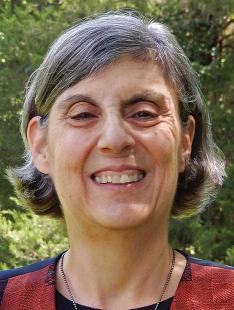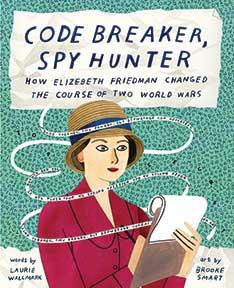As a biochemistry major who was a student not long after Princeton began admitting women, Laurie Wallmark ’76 was often among a small minority of women in her classes, if not the only one. That experience followed her into a corporate career in scientific computing and is part of what has inspired her current work in children’s books.
Wallmark is an award-winning picture-book author who spotlights little-known women innovators, such as 19th-century mathematician Sophie Kowalevski and 20th-century code-breaker Elizebeth Friedman. “The fact that I want to make sure that this current generation of children realizes that women can be in these fields, I’m sure, is related to the fact that I was often the only woman in the room,” she says. Her goal continues to be important as the percentage of women interested in some math and science fields, such as computer science, has declined. But to succeed, “you have to get kids early,” she says.
Wallmark started writing for children around 1999. At first, she was focused on writing novels for preteens, but she fell in love with picture books after taking a class on the genre. Children’s book publishing, however, is a tough industry to break into. “I had over 500 rejections between different stories, agents, and editors before I got my agent,” she says.
In 2010, Wallmark had a breakthrough. She won a work-in-progress honor from the Society of Children’s Book Writers and Illustrators for what would become her first book in 2015, Ada Byron Lovelace and the Thinking Machine, about the woman often regarded as the first computer programmer. It was a sign she was on the right track.
To hone her craft, Wallmark earned an MFA from Vermont College of Fine Arts in 2016. By then, her stories of women in math and science not only fit with her interests, but also with a growing market demand for nonfiction children’s books from schools, libraries, parents, and young readers.
Several more books are slated for 2023, including A Passion for Science: Maria Mitchell, Astronomer. She is also working in other genres, including fiction picture books.
What makes a successful picture book is writing in a way that children will understand and that gives room for the illustrator to expand on. “Picture books may take less total time to write than a novel, but you spend a lot more time on each word, on each page, on each sentence than you do on a novel because there’s just not a lot of room,” she says.
Instead of focusing solely on these women’s discoveries, Wallmark often reaches back into their childhoods, sharing, for example, that Lovelace enjoyed launching a model sailboat across a pond. She includes these details because kids need to understand that these innovative women were once children themselves, who enjoyed tinkering or reading or playing. Those moments make the women relatable to young readers and help them imagine that they could one day become equally accomplished.
What impresses Wallmark most about the women she highlights is that they not only achieved remarkable things, but did so despite the obstacles for women of their times. She adds, “That’s a good thing for kids to understand, too.”


